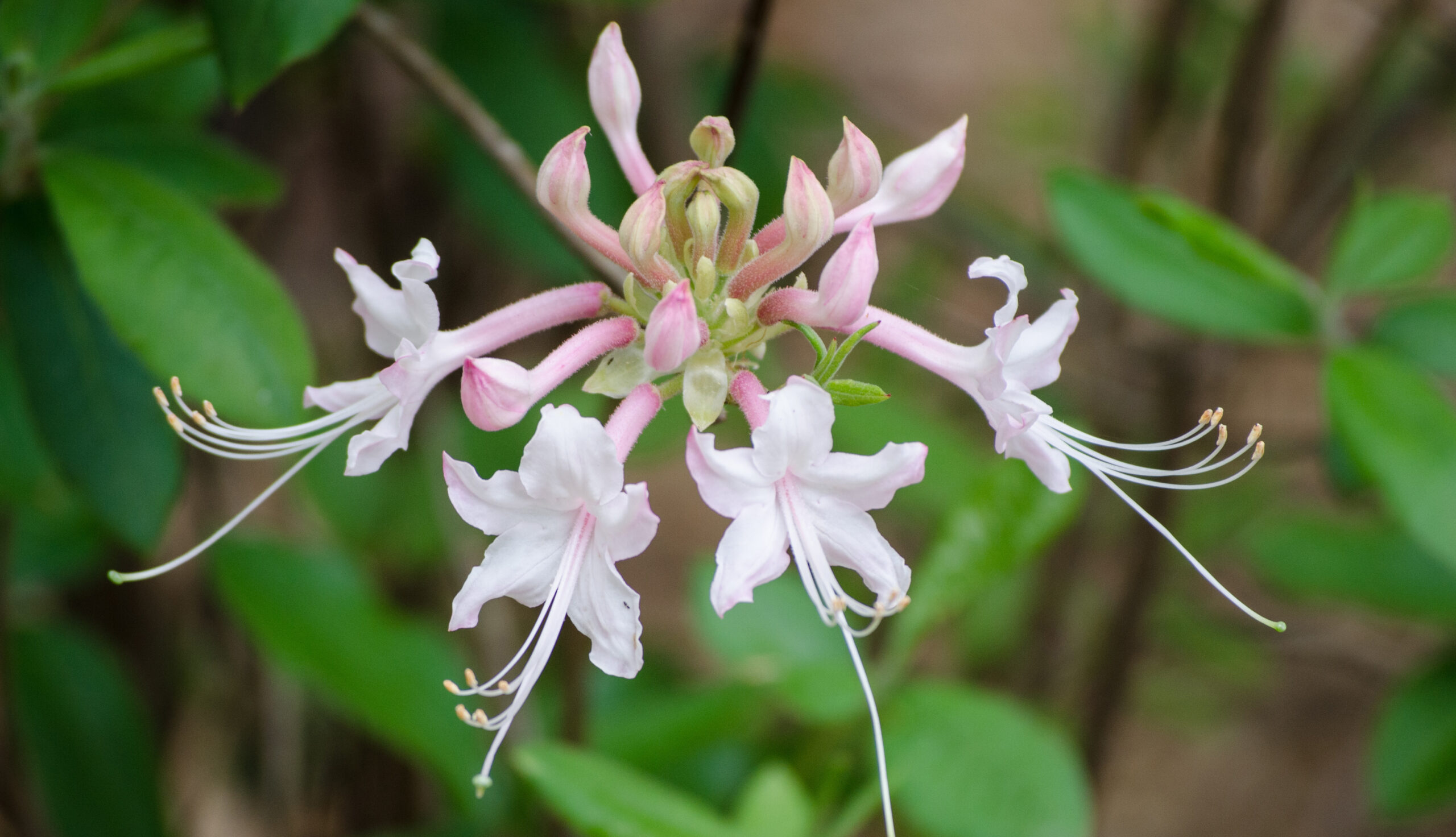
Native Azaleas offer you the opportunity to add unique, show-stopping beauty to your landscape and help out our local wildlife at the same time. Stunning clusters of trumpet shaped blooms come in a rainbow of pink, red, orange, yellow, and white.
Native Azaleas are a group of deciduous shrubs (that means they lose their leaves in the winter time) that are all native to the United States. Most bloom in late winter and spring, but some flower as late as early summer. Florida is lucky enough to have 4 kinds of Native Azaleas growing in the wild. There are many other kinds that grow over the southeast. Plant breeders have been hard at work for decades to combine the best of the wild plants to create new varieties. These new hybrids have bigger flowers, brighter colors, and more blooms than many of their wild cousins. Many Native Azaleas even have a sweet fragrance to enjoy.
Hummingbirds and some butterflies get food from Native Azalea flowers while they pollinate the blooms. These early flowers are a very important source of food for these pollinators and make a valuable addition to any wildlife friendly garden.
Native Azaleas are so easy and rewarding to plant in your garden. They grow into large, well-branched shrubs that have an open and airy presence. Their light and delicate appearance is transformed into an explosive show of color when the spring blooms open. Mature plants will have hundreds to thousands of blooms open at one time. Try planting Native Azaleas along the edge of your property, where the formal yard transitions to a more wild area. They would also look amazing planted along a wooded pathway to create beacons of color that will entice you to enjoy the outdoors each spring. I love to see Native Azaleas planted in clusters underneath the low outer branches of big live oak trees where their blooms glow like jewels in the shade.
Native Azaleas are typically on the small size when they are purchased from a nursery, but don’t let that hold back your imagination. Be sure to do some research online to see pictures of what they will grow to become. This group of plants may start out small, but they will surely become one of your most treasured garden dwellers as they reach maturity.
Native Azaleas grow happily in the shade of mature pines and oak trees, which we are in no shortage of here in Tallahassee. Be sure to amend the soil at planting time with plenty of compost to create lots of rich soil. Always keep your Native Azaleas mulched well with organic material like pine bark or pine straw to help keep the soil cool and moist. Water frequently for the first year.The biggest and prettiest established plants will be ones that get a little help from the sprinkler during dry periods (no rain for 1-2 weeks). Fertilize with Holly Tone in spring and summer. Native Azaleas like an acidic soil. If you have other azaleas, camellias, gardenias, or blue hydrangeas in your area that is a good sign the soil is acidic. If you have lots of sand and/or lime rock in your area your soil may be basic, which is not ideal. Use soil acidifier and lots of compost to change the pH toward the acidic side.

